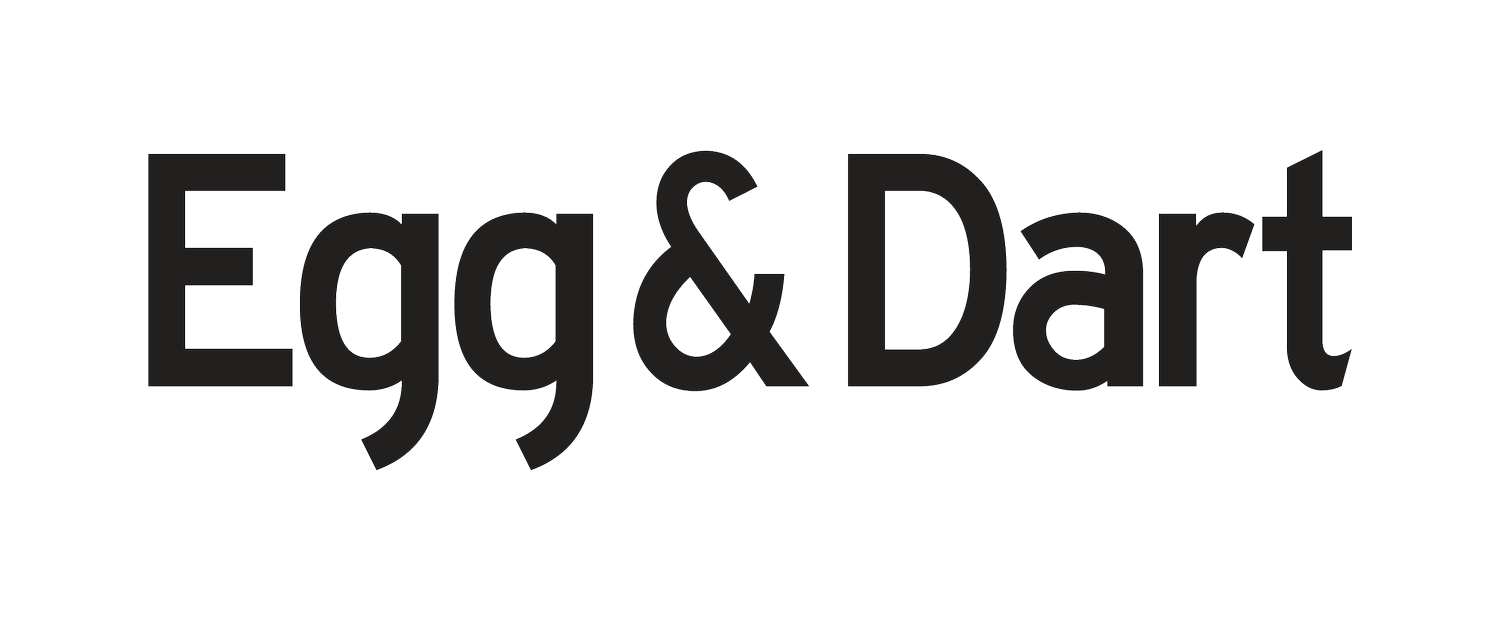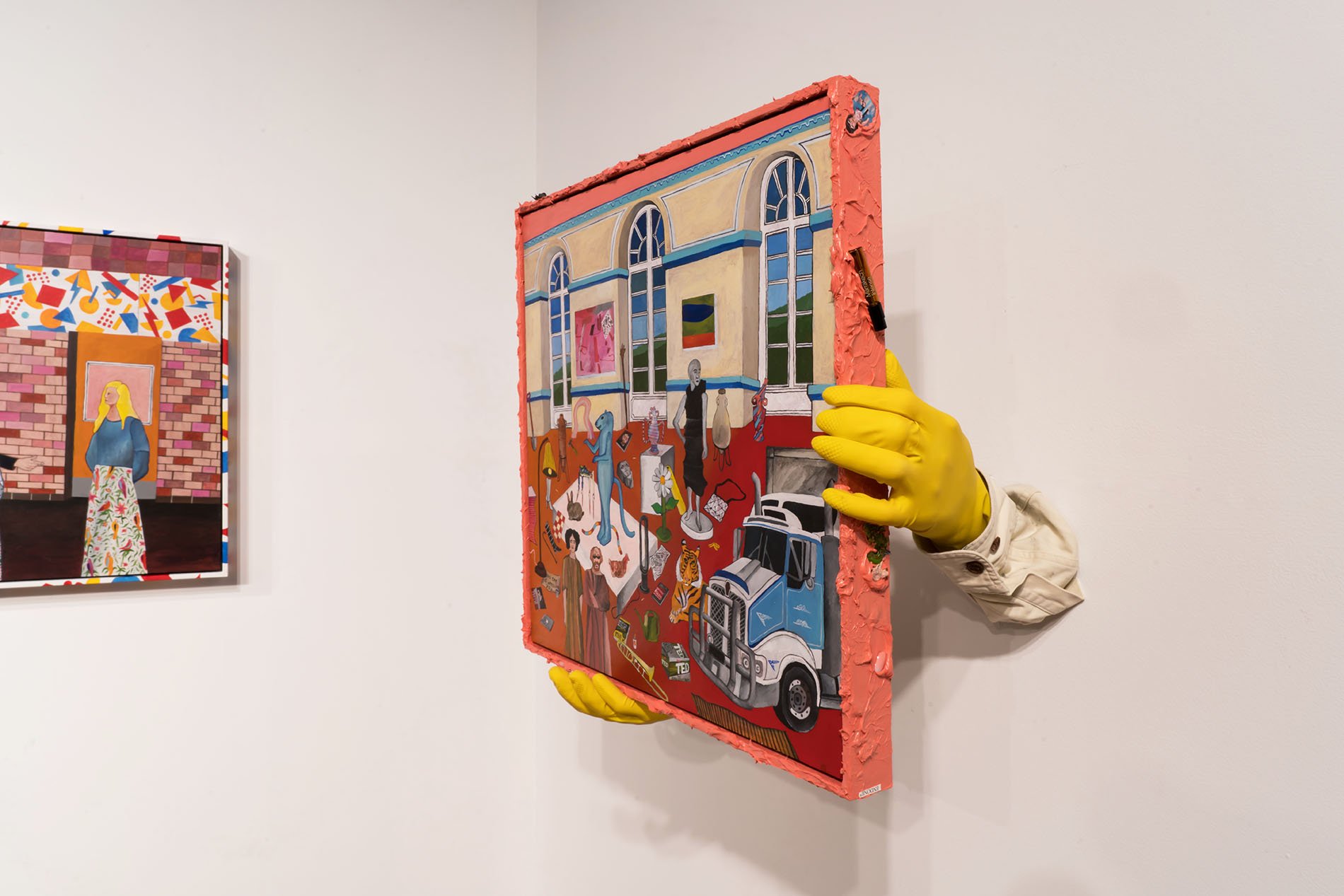Nick Santoro’s absurdist genre paintings bring together an uneasy alliance of characters. The illusory depth has expanded in these latest works with an overlapping of bodies, settings and timeframes. Santoro is reasoning with a proto perspectival space of shifting vanishing points. These wonky structural techniques are intended, offering undulating surfaces on which figures are precariously wedged, swallowed up, catapulted and cropped. Santoro talks of the selections he makes as a kind of distillation, an editing and recombining of forms, both architectural and figural, which reposition the global within the local.
The artist’s perspectives are skewed like a tableau of early Renaissance imagery. Figures are often positioned at the apex of his compositions, other activity in the picture plane descending into fragmented cultural and historical references. Santoro’s painted frames draw on other disparate references. The frames another form of containment for these stray figures. The artist is intrigued by different cultural worlds and their coding. His paintings let those separated worlds cohabit.
His work gives a big nod to the history of genre painting but Santoro does not speak in weighted historical detail. The flattening of art and cultural hierarchies in his works is a reassuring anchor for the viewer. The young artist might mention his interest in the Dutch Golden Age in the same conversation as contemporary artists like Dan Arps or Jonathan Meese, various art blogs, or the composer Mort Garson.
Santoro is getting recognition. Born in 1994, his work was shown in the 2018 Sulman Prize at the Art Gallery of New South Wales. He was a finalist in the Kilgour Art Prize and Hazelhurst Art on Paper Award 2019, and has recently shown at the Wollongong Regional Gallery and Casula Powerhouse Arts Centre.
-Melody Willis









